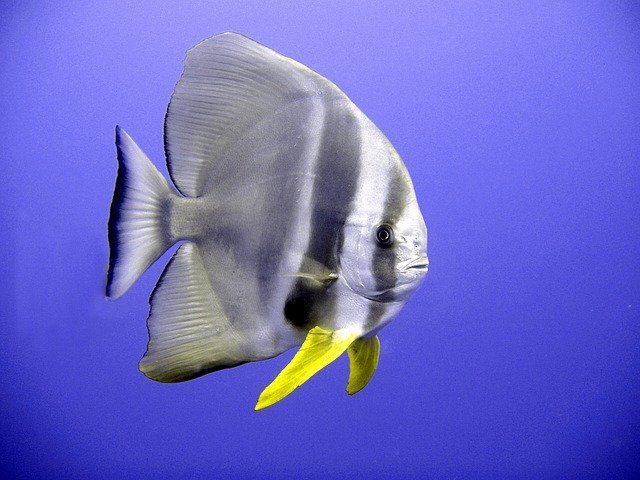Sitting in a canoe or other boat and admiring nature can be very relaxing. It takes minimal knowledge to fish properly, so keep reading to achieve success and safety on your next fishing trip.
Wade through water slowly. Standing still is ideal, as you won’t make much noise, but if you need to move from one place to another, walk slowly so as to avoid splashing. Many people do not realize it, but when you move through the water you are at risk of scaring the fish away with the noise. Take your time and avoid disturbing components of the river bed.
People who are fishing in streams should always cast upstream and let the current sweep your bait or lure into your fishing hole. This will give your bait a more natural appearance, increasing your odds of a fish biting. Make sure your line isn’t in the water.
Make sure that when you go out to fish, you know the maximum weight capacity that your boat can hold. A swamped or tipped boat can be a catastrophe, especially if you are in deep water. Always give yourself a margin of error when it comes to weight.
Be responsible when you fish. Respect nature by leaving as little impact as possible. If you want to bring food or drinks with you, make sure to dispose of the containers properly. Learn the laws limiting how many fish you may catch at a time. Follow these laws. If you catch a fish that is too small to take with you, release it.
In most instances live bait that is native to the area will catch more fish. Fish will be most attracted to insects that live in the area. If the insect is something you can acquire close to the water, fish may bite more at it. There are a lot of expensive lures that do not work very well and only help the bait store, not the fisherman.
Despite the kind of trip you take, respect the environment and creatures that are in it. Humans, fish and other animals all need to share the same environment. Do your share to take good care of nature.
Make sure that your hands are free of odor. It is possible for odors to transfer from your skin and give your bait an unnatural scent. If the fish smells this on the bait or lure, they probably will not bite.
When fishing for the big fish, offer the bigger bait. It may cost you more to purchase large bait, but the payoff will be a large catch! Naturally, larger fish want to eat larger object, which is why larger bait will lure them in.
Do not forget to bring extra food and water when you go out fishing, especially in the summer. Sitting in the sun for hours at a time can drain your body, so it is important that you keep it replenished to maintain your energy levels. Depending on the amount of time you are going fishing, have at least a few meals and snacks.
Fly Fishing
Make sure you understand the laws and regulations of the area you are fishing in. In some areas, fishing may be prohibited in certain bodies of water, or the use of certain kinds of bait may be forbidden. Go ahead and have a chat with someone from the local government office to clarify this.

Always try to avoid windy days if you are fly fishing. You won’t cast as effectively if it’s very windy outside. Fly fishing should be done at times when there is minimal wind, like the evening or early morning. If you are fishing with wind, cast in the direction of the wind.
Make sure the fishing boat is fully prepared when spring hits by taking care of the boat’s battery. To protect your boat’s battery, remove it from your boat and sit it in a dry location, such as your garage or basement. However, avoid placing the battery on a cold concrete floor, as that may lessen the battery’s life.
Lots of bass fishermen use light-colored grubs. Light-colored grubs are available in many colors from white, to yellow, to chartreuse and they tend to be very effective. Translucent grubs tend to feature metallic flecks that work to reflect light and boost your chances of success. Choose a grub that is the same color as the water for times when fish aren’t biting.
Stay calm when you are wrestling with a big fish. You want to avoid reeling in the fish if it’s swimming away. Do your best to relax and let your rod and the drag do the work. When your hook has been set, you can set the drag. To maximize your success rate, simply angle the rod 45 degrees towards the water, and have it pointed at the fish.
If you plan on doing some night fishing, research ahead of time what phase the moon will be in as this can affect your fishing greatly. A full moon is often a good time to go fishing, while moonless nights are not recommended. Be aware, though, that even though you can see better in a full moon, so can the fish, so take that into account.
Setting the hook properly is something everyone should learn. This step is especially important if you plan to use lures. If you lose your fish because you did not set the hook properly, that is a lot of wasted effort that leads to disappointment.
Let your fish go if it turns around before you finish reeling it in. Here you will find that it’s too late for reel and pump action. Then next time, wait a little longer before you start reeling the fish in.
Bring a net with you if you plan to catch larger fish. When you reel in your catch, the fish may be very jumpy, in which case you will want to have a device to secure them in place. You have a better chance to show off your latest catch instead of telling another story about the one that got away.
If you are bank fishing, make sure you don’t set the surrounding area on fire. Because you are surrounded by foliage and not just water, you have to be especially careful about where you discard your cigarettes. While the bank might be wet, there is dry foliage all around that can easily catch on fire.
A key component to fishing is patience. If you’re not a patient person, you may want to try a different sport that you find more engaging. To develop the necessary patience, start with baby-step trips and work your way up to the bigger fishes.
Once you how to fish and what techniques work, it’s a piece of cake. Remember the tips in this article to feel confident the next time you go on a fishing trip.
As you stock your tackle box and boat for a fishing trip, you must include all necessary tools and gear. Choose whether to use a lure or live bait based on the kind of fish you want to catch. You should take the time to figure out what combinations will work best for your situation.

